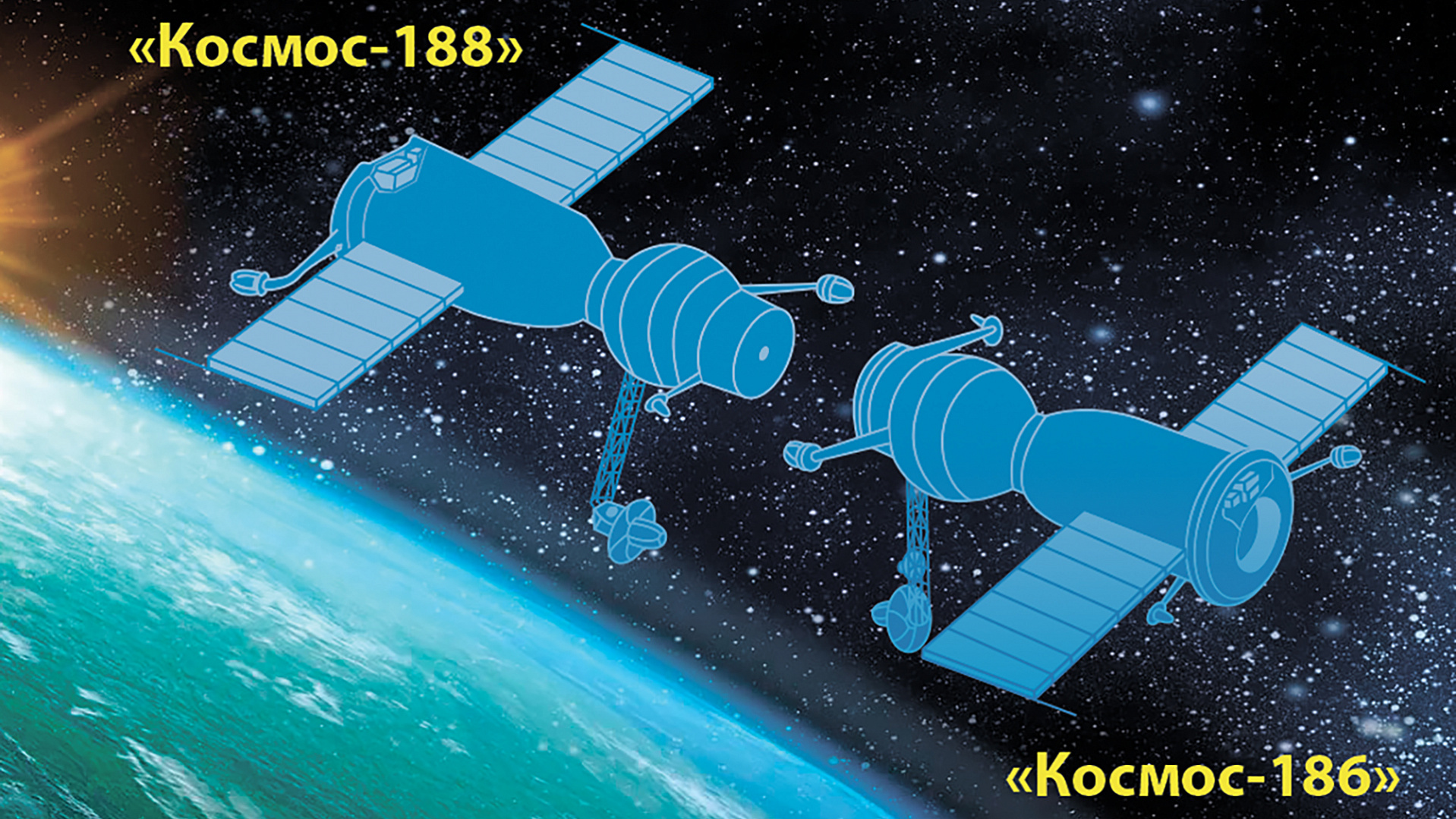How did the docking begin?

The world’s first automatic docking of two Soviet spacecraft Cosmos-186 and Cosmos-188 took place on October 30, 1967. The docking was carried out using the Igla radio mutual measurement system instruments, designed and developed at the RIPI. This event had made it possible to build a long-term orbital station, where a person can live and work a normal life over an extended period of time, creating preconditions for exploration of the Moon.
On October 27, 1967, the Cosmos-186 satellite was placed into orbit, the Cosmos-188 spacecraft was launched later, on October 30.
Grasping/berthing/docking manoeuvres took only 54 min from a distance of 24 km.
The first automatic docking occurred outside of radio visibility zone of the Soviet ground stations, without control from the Earth. On the first attempt!
The success of the world’s first automatic docking was a result of 5 years of hard work. In 1962, on the personal initiative of Sergey Pavlovich Korolev, who was heading OKB-1 (today PAO RSC Energia), NII-648 (today JSC RIPI) received a proposal to study the possibility of developing and manufacturing equipment for conducting rendezvous and docking of spacecraft.
Under the terms of reference, one of the approaching space vehicles must be active, i.e. to perform the necessary maneuvers and turn on the engines in accordance with the algorithms of the motion control system based on signals of the future system for mutual measurement of relative motion parameters. The second space vehicle, passive, must constantly be oriented to the active one. The orientation is to be carried out up to the contact.
The requirements for measurement accuracy and weight of the equipment seemed impossible, time limits were strict. Despite this, the team under the leadership of Yevgeny Vasilyevich Kandaurov started to work. He proposed the architecture of a new radio-engineering system, the design principles of which have been preserved so far in all subsequent generations of equipment for radio mutual measurement systems.
The system became to be known Igla. It was consisted of two parts: an interrogator, Igla-1, placed on the Cosmos-186 active spacecraft, which performed principle manoeuvres and a transponder, Igla-2, placed on the Cosmos-188 passive motionless vehicle.
Since then, the equipment installed on the “active” vehicle is traditionally marked with “A”, and on the “passive” one – with “P”.
For three years, the RIPI’s specialists developed the documentation, calculated the measuring channels of this radio system, manufactured and tested prototype models of the Igla equipment for passive and active spacecraft, conducted further development of these prototypes; as well as manufactured, tested, adjusted and delivered standard sets of “active "and" passive" equipment to equip the spacecraft.
This was done for the first time from nothing and was done very successfully. No one had ever developed, produced and tested such equipment, it had no analogue in the world.
The development of the radio mutual measurement systems was linked with the emergence of new satellites and space stations. The docking of the Cosmos series satellites was replaced by the docking of Soyuz and Progress satellites with the Salyut series orbital stations, afterwards with the Mir station, and, finally, with the ISS.
Over a period of more than half a century, three generations of the radio system for mutual measurement of motion parameters for spacecraft search, rendezvous and docking have been designed and developed at RIPI. The first generation is the Igla-A and the Igla-P; the second one is the Kurs-A and the Kurs-P; today’s third one is the Kurs-NA - new and active and the Kurs-MKP - modular, component, passive.
Each generation of docking equipment is produced based on new principles of signal processing; it becomes easier, cost-effective, but consistently maintains high degree of reliability. On average every year the RIPI provides docking of about six space missions. For more than half a century our Institute has provided docking of more than three hundred space missions. Currently, new modifications of the radio mutual measurement system aimed at achieving ambitious targets are under development.
RIPI Press Service